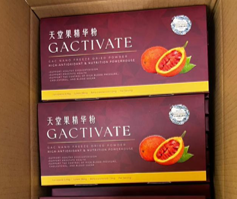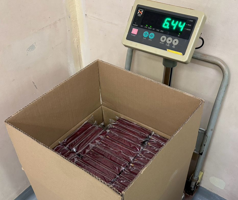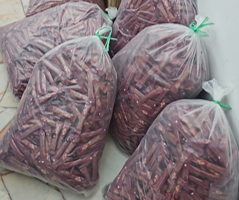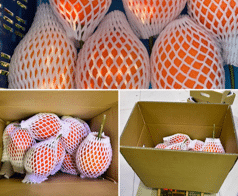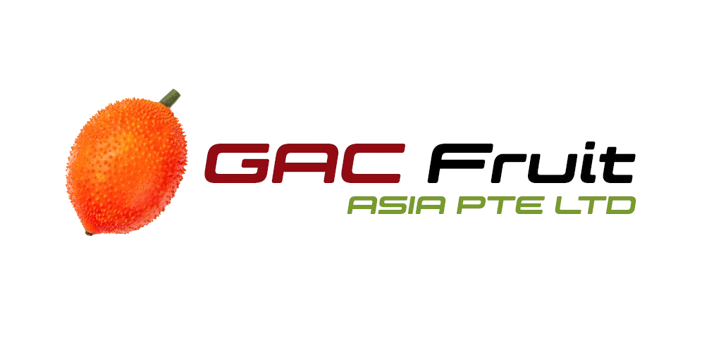A Gift From Nature, A Heavenly Blessing Product
GAC Fruit, is often referred to as the “fruit of heaven” due to its impressive nutritional profile and heath benefits
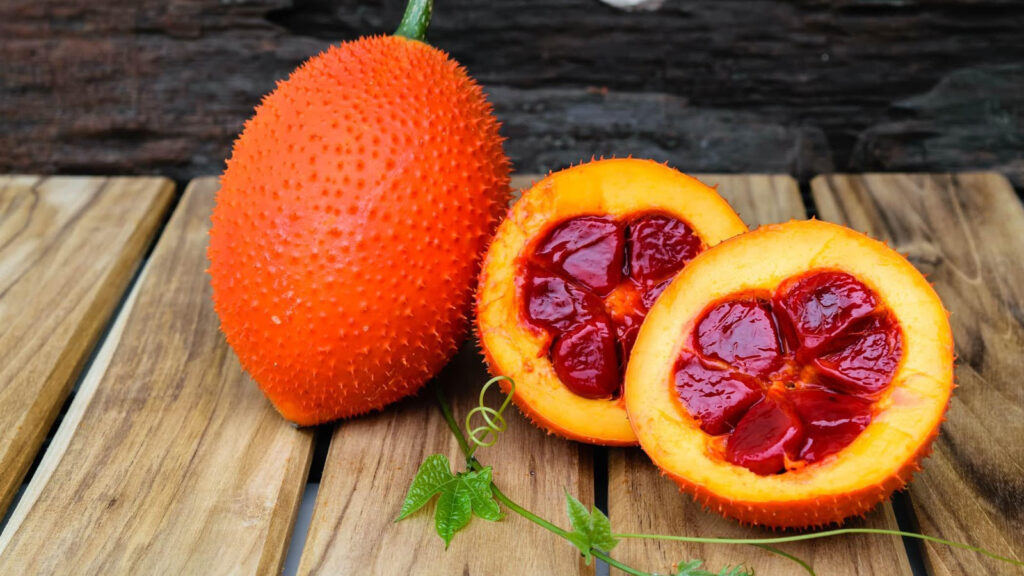
Gac Fruit Origins and Geography
Gac fruits are native to Southeast Asia, including Vietnam, Thailand, Indonesia, and Malaysia. These fruits have been growing wild since ancient times, with their species name, cochinchinensis, derived from the Cochinchina region. Gac vines thrive in warm, tropical climates, climbing on trees and trellises. While records from the 15th century show their use in Chinese medicine, Gac fruits are now rare and mostly found in Southeast Asia and a few other tropical regions, including Brazil. Over the years, Gac Fruit has been introduced to Canada, the USA, Dubai, and China.
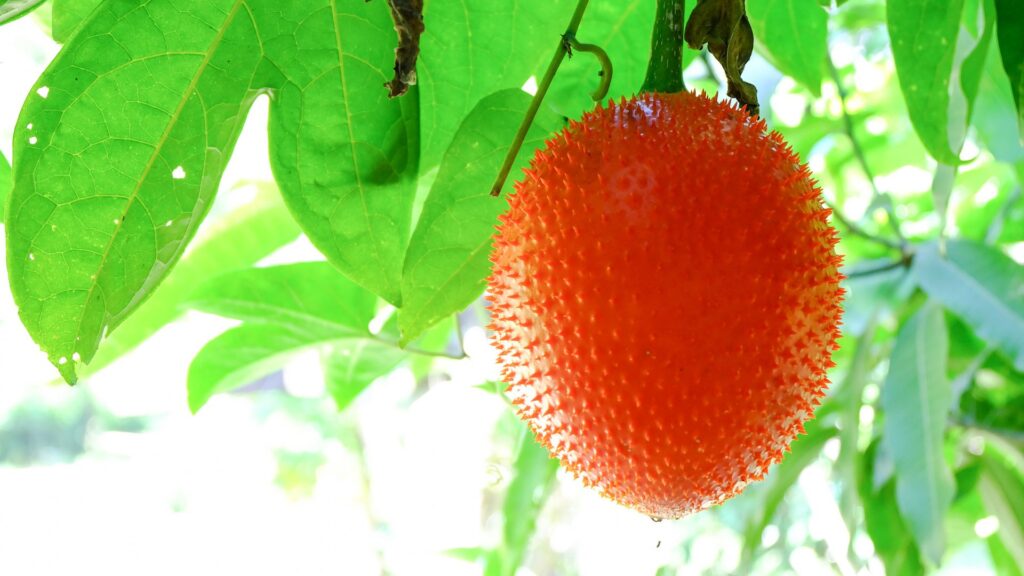
Noah-Breed Gac Fruit
After years of research and development, Gac Fruit Malaysia has successfully cultivated the Noah Breed Gac Fruit—a new variety specifically adapted to thrive in Malaysia’s soil and weather conditions.
Noah Gac Fruit is a specific breed of Gac Fruit that has been developed and cultivated for its enhanced characteristics compared to other Gac varieties. Here are the key features of the Noah Gac Fruit:
1. Larger Size: The Noah Gac Fruit is larger than the traditional Vietnamese breed of Gac fruit, making it more productive in terms of yield.
2. Higher Nutrient Content: It contains more aril (the red, nutrient-rich part of the fruit) and has a higher concentration of lycopene and beta-carotenoids, which are powerful antioxidants with numerous health benefits.
3. Improved Physical Characteristics: The Noah Gac Fruit has fewer thorns and a more solid exocarp (outer shell), making it easier to handle and process.
4. Adaptation to Local Conditions: This breed has been specifically cultivated to thrive in Malaysia’s soil and climate, ensuring consistent growth and quality.
Overall, the Noah Gac Fruit is a specially bred variety that offers superior nutritional content and is better suited to the agricultural conditions in Malaysia, making it an ideal choice for commercial cultivation and health product development.
The morphology of Noah Gac fruit includes a thorny exocarp, followed by a thick yellow mesocarp, and a red aril encasing the seeds inside. The seeds are flat, hard, and brown or black. The mesocarp, which makes up nearly 40% of the fruit’s weight, serves as a protective shell for the arils. The aril, accounting for 35% of the fruit’s weight, is 1 to 3 mm thick, soft, and sticky. The oil content in the arils is approximately 200 mg/g, and it is highly unsaturated, with two main fatty acids: oleic (35.22%) and linoleic (31.44%). Compared to regular Gac Fruit, which has a ratio of 60% mesocarp to 20% aril, the Noah Gac Fruit is more nutrient-dense.
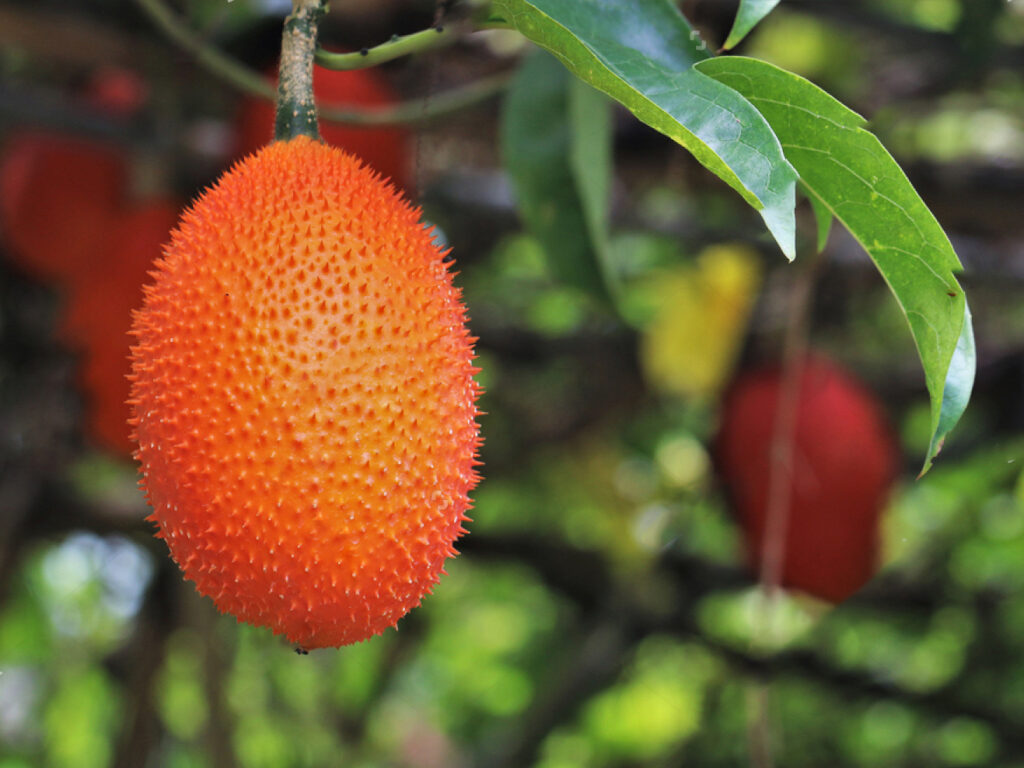
Description/Taste
Gac fruits are small to medium-sized, averaging 11 to 13 cm in length and 8 to 10 cm in diameter. They have a round to oblong shape with a semi-thin, spiky, and leathery skin that changes from dark green to yellow, orange, or red-orange as they ripen. Inside, they have a creamy orange to yellow flesh that is 2 to 3 cm thick and surrounds a central chamber of 15 to 20 seeds wrapped in dark red membranes. The edible crimson arils have a soft, slippery texture and a glistening appearance due to their high oil content. When ripe, Gac fruits have a mild, neutral flavor and a faint pumpkin-like aroma. They are mostly used in combination with other ingredients to enhance flavor.

Nutritional Value
Gac Fruit is an antioxidant powerhouse, rich in beta-carotene, lycopene, vitamins, and minerals. These nutrients are claimed to offer comprehensive eye care, prevent vitamin A deficiency, obesity, and cancers, as well as reduce cholesterol, maintain healthy blood pressure, protect the skin, and support prostate health.
Moreover, the pro-vitamin A in the seed’s nib is believed to prevent cell aging and promote cell recovery, along with the development of body nerves, muscles, and brain function. The major carotenoid, lycopene, is supplemented to prevent prostate cancer, while Omega 3, 6, 9, and Coenzyme Q10 help prevent heart disease. These products are primarily used for health purposes, offering significant benefits through strong vascular and cellular protection and rejuvenation. The success of Gac products in global markets is attributed to the dominant nutrients found in the Gac flesh, aril, and seed, which are also essential in preventing cancer and other diseases.
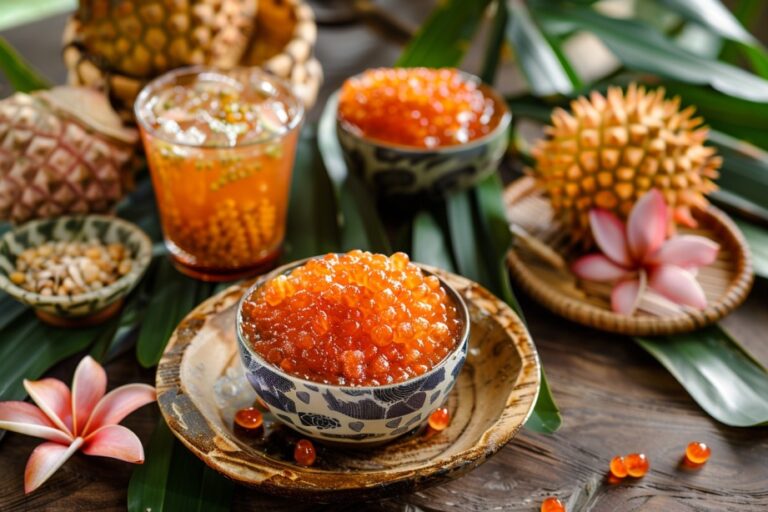
Applications
The most commonly used part of the Gac fruit is the fleshy red arils surrounding the seeds, often mixed with the orangey flesh to make traditional Chinese herbal soup, which is believed to boost blood circulation and reduce bad cholesterol in the body. In addition, the red arils are frequently used as a dessert ingredient, such as in cendol (a shaved ice dessert), pastries for cupcakes, and natural coloring for ice creams. Furthermore, it can be processed into paste, primarily used for pasta, pizza base, and soups.
Several Gac products are currently being manufactured by Gac Fruit Malaysia Sdn Bhd, including Gac freeze-dried powder, Gac aril puree, and Gac oil. These raw materials are easily accessible for therapeutic, health supplement, food ingredient, and cosmetic applications.
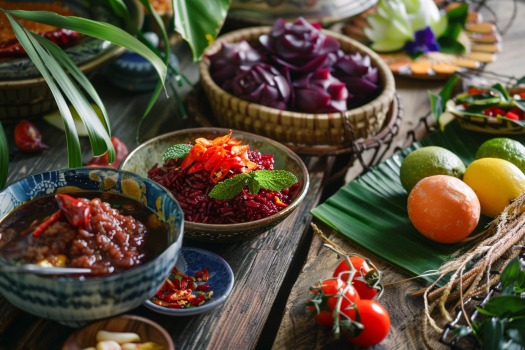
Recipe Ideas
Here are some recipe ideas featuring Gac fruit, categorized by difficulty:
- Easiest:
- Gac Fruit Japanese Curry Rice
- Chinese ABC Soup with Gac Fruit
- Moderate:
- Gac Fruit & Tomato Omelette
- Gac Fruit Sticky Rice Cakes
- Fried Tropical Fish with Gac and Pineapple Sauté
- Harder:
- Gac Fruit Cupcakes
- Gac Fruit Puree for Pizza & Pasta
- Gac Fruit Marinated Chicken Chop
What Sets Us Apart
Our Gac Fruit vs Others
Gac Fruit Plantation
Malaysia’s visionary Gac Fruit Research Sdn Bhd has implemented advanced agricultural technologies through years of commitment and innovative cultivation strategies to maximize the yield and sustainability of gac fruit. Dedicated to environmentally responsible practices and innovative solutions, the company enhances productivity and profitability while minimizing environmental impact. Its strategic location along the equatorial line provides unique geographical and climatic advantages for gac fruit cultivation.

The largest medical plantation in Malaysia
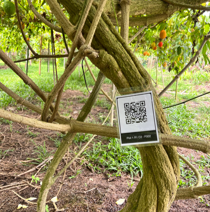
The Most Advanced GacFruit Plantation Technology Park in Malaysia

Malaysia's unique premium variety of heavenly fruit
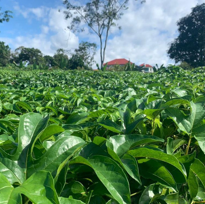
The most potential new botanical garden in Malaysia
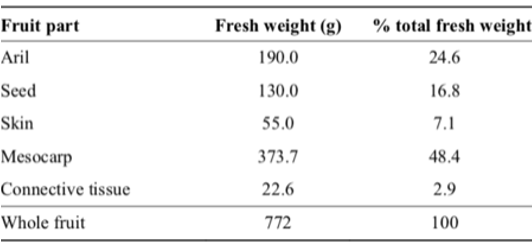
The morphology of Gac fruit in Figure 1.3 shows from outside to inside: thorny exocarp then a thick yellow mesocarp, followed by a red aril wrapping up the seeds inside. The seeds inside the arils are flat, hard and brown or black. The mesocarp, which occupies nearly 50% of the weight of a fruit, plays the role of a shell to protect the arils inside. The aril, accounting for 25% of the fruit weight, is from 1 to 3 mm thick, soft and sticky.The oil content in the arils is approximately 200 mg/g. This oil is highly unsaturated with the presence of two main fatty acids, oleic (35.22%) and linoleic (31.44%).
Diagram

Gac fruit

Ripe Gac fruit

Male leaf

Female leaf

Aril

Pulp

Seed

Seed nibs

Male flower

Male stamen

Female flower

Female stamen
The Unique Structure of Malaysia’s Noah Gac Fruit: A Tropical Treasure
In the heart of the Southeast Asian tropical rainforest, Malaysia cultivates a unique variety of Gac fruit known as the Noah Gac Fruit, which differs significantly in structure from Gac fruits grown in other regions.
The most distinctive feature is the aril — rich in oil content, deep red in color, and possessing a silky texture.
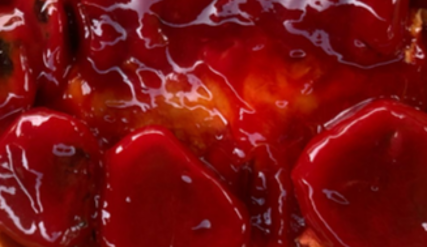
High-quality Aril
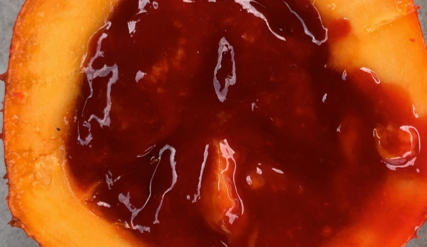
Malaysia- Gac Friut
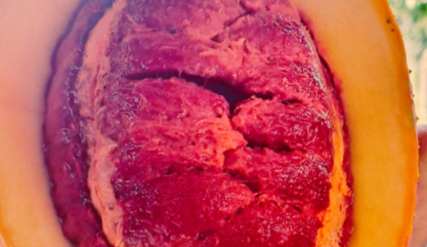
Other regions of Asia - Gac fruit
Malaysia’s Tropical Treasure with a Unique Silken Aril
Located in the heart of the tropical rainforest in Southeast Asia, Malaysia nurtures a unique variety of the Gac fruit — the Noah Gac Fruit — whose structure differs greatly from Gac fruits grown in other regions.
Most distinctive is its aril, which contains a high oil content, has a deep red color, and a silky texture.
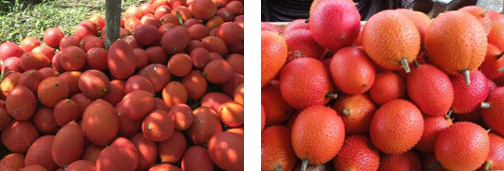
In Malaysia, the "Gac Fruit" typically takes on a fully red or deep red hue when it ripens, and each one usually weighs around 2 catties (approximately 1 kilogram).
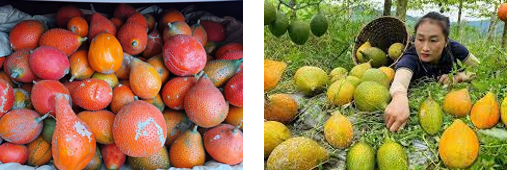
In some other parts of Asia, gac fruit can be picked before fully ripening and then gathered together to naturally ferment until they turn a rich orange-red color. During this process, there's a relatively high chance of nutrient oxidation.
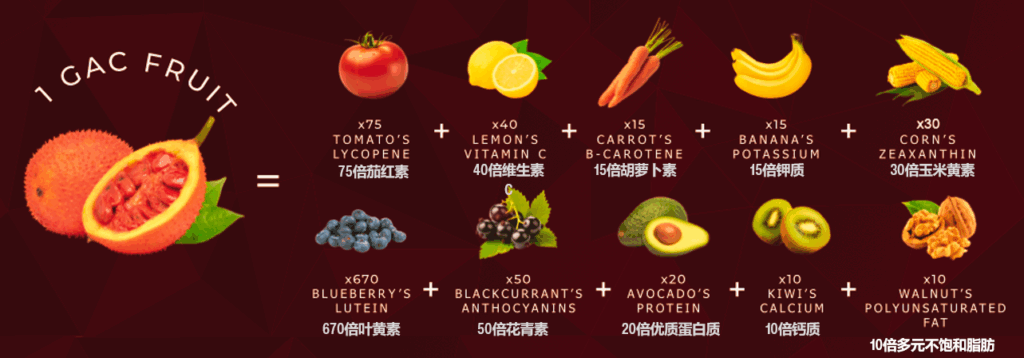
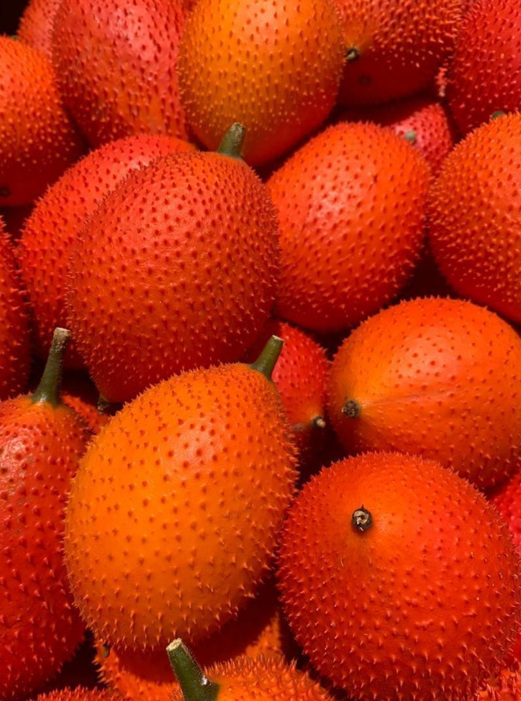
Key Nutrients and Health Benefits of Lycopene-Rich Foods
- Lycopene – A powerful antioxidant responsible for the red-orange color, linked to various health benefits, particularly prostate health.
- Beta-Carotene – A precursor to vitamin A that supports vision, immune function, and skin health.
- Vitamin C – An essential nutrient that boosts the immune system, promotes collagen production, and enhances skin health.
- Vitamin D – Crucial for bone health, this vitamin also plays a role in regulating the immune system, supporting muscle function, and maintaining cardiovascular health.
- Vitamin E – An antioxidant that helps protect cells from oxidative damage and contributes to skin health.
- Fatty Acids – Includes beneficial fats like omega-3 and omega-6, important for brain function and managing inflammation.
- Fiber – Supports digestion and helps maintain a healthy gut.
- Minerals – Supplies essential minerals such as calcium, manganese, zinc, potassium, magnesium, and iron, all vital for numerous bodily functions.
- Carbohydrates – Provides energy, though in lower quantities compared to more common fruits.
- Phenolic Compounds – Known for their antioxidant properties and potential health-promoting effects.
- Flavonoids – Another group of antioxidants that help counter oxidative stress and inflammation.
- Coenzyme Q10 – Recognized for its potent antioxidant properties, aiding in the protection of cells from oxidative stress and free radical damage.
The chemical structure of lycopene.
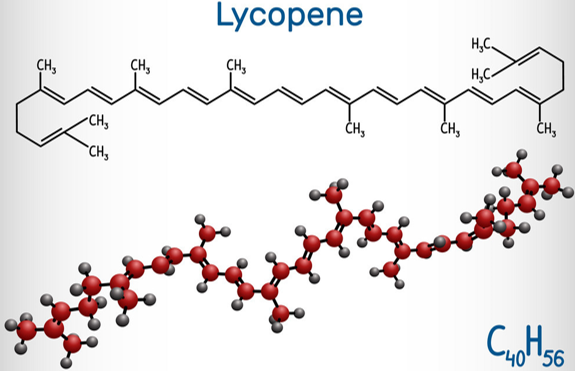
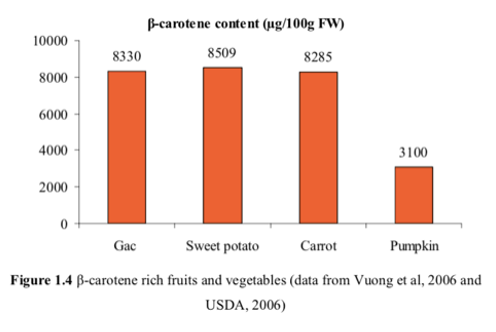
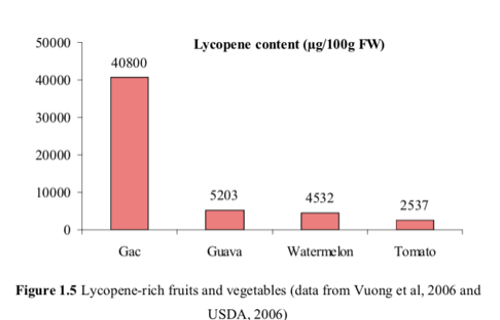
Exclusive raw materials
Exclusive raw materials supply ensures that subsidiaries and brands under the group have access to unique ingredients or materials that competitors cannot easily obtain. This strategic advantage allows the company to stand out, enhancing its market position, brand value, and consumer appeal.
The company can guarantee consistency, quality, and reliability of these materials, preventing market fluctuations and scarcity. Furthermore, this exclusivity allows the company to highlight authenticity, innovation, and high standards in its products, directly aligning with consumer preferences for originality and premium products.
Exclusive supply arrangements also strengthen relationships with suppliers, fostering further collaboration and joint investments in sustainable development and ethical sourcing practices. Emphasizing exclusive raw material supply demonstrates a commitment to excellence and differentiation, which in turn enhances customer loyalty and provides a long-term competitive edge in the industry.
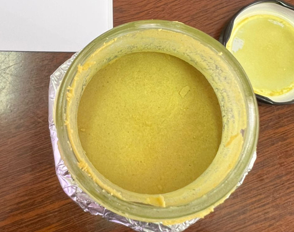
Supercritical fluid extraction of fruit oil
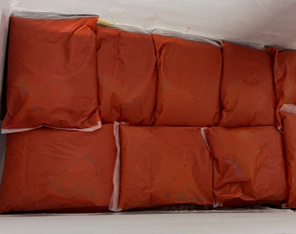
Noah variety fruit
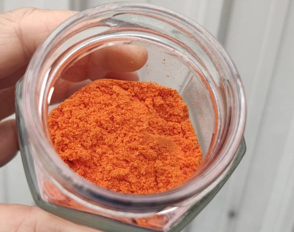
Nano freeze-dried powder
Production line and quality management.


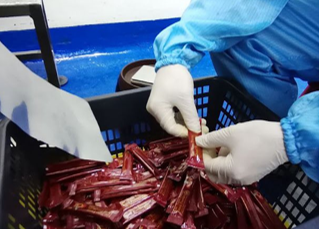

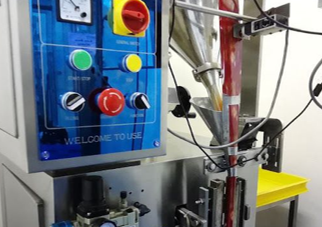
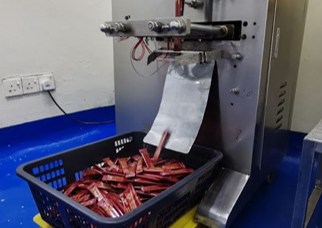
Subsequent product inspection and review.
The subsequent steps in product development usually involve checking raw materials, monitoring the production process, and testing the final product.
These stages help ensure that each batch of products maintains consistency in appearance, functionality, durability, and safety.
A comprehensive testing approach might include physical inspections, chemical analyses, as well as performance evaluations conducted with advanced technology and skilled personnel.
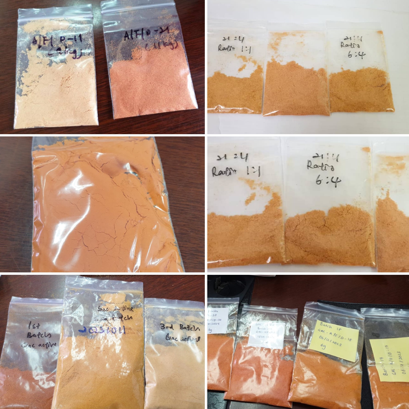
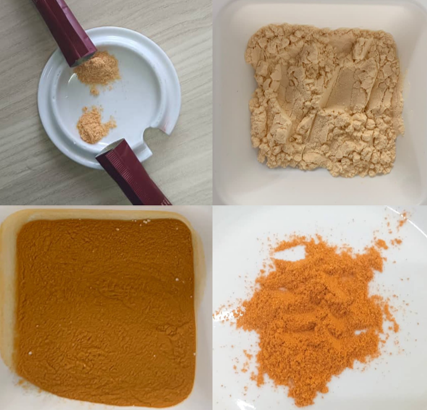
Product Quality Control
Our product quality control, a crucial aspect of manufacturing and production, involving systematic processes designed to ensure that products consistently meet established standards and customer expectations.
Effective quality control safeguards brand reputation, promotes customer satisfaction, and minimizes the risk of defects or recalls.
